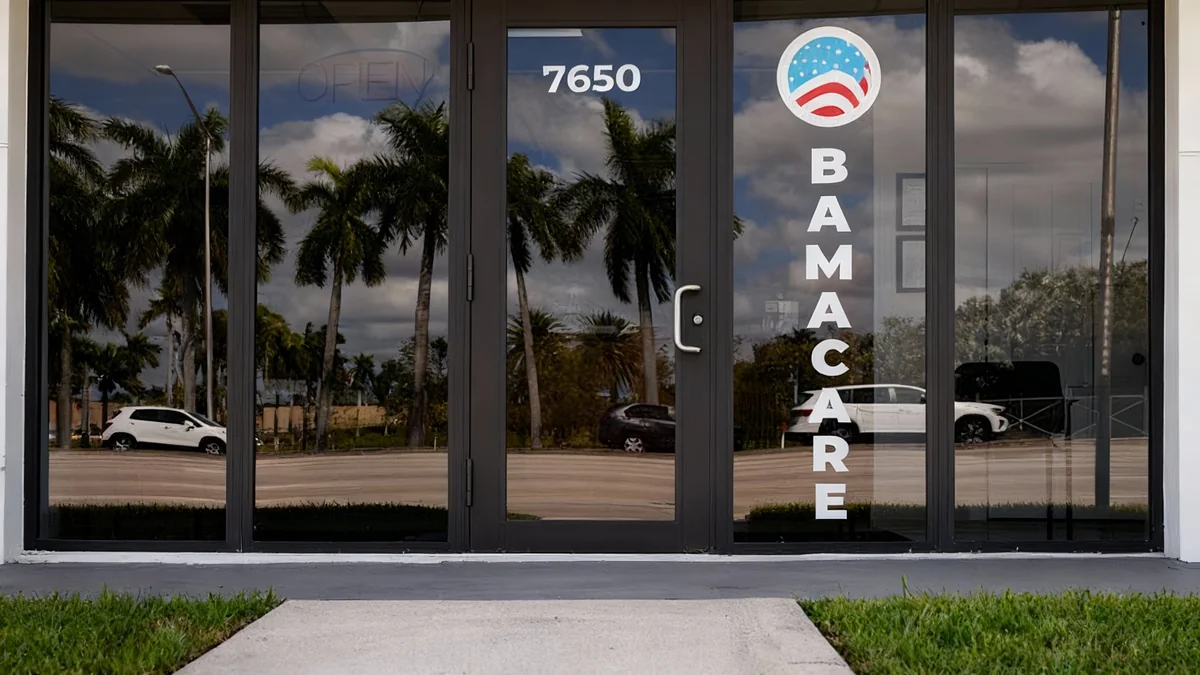Millions of Americans are facing steep increases in their health insurance costs for the upcoming year, with new data revealing significant premium hikes on the Affordable Care Act (ACA) marketplaces. The price surge is compounded by a political stalemate in Congress over the extension of federal subsidies that have kept coverage affordable for many households.
As the open enrollment period approaches, consumers are getting their first look at the new rates on the government's healthcare website. The figures show that without renewed financial aid, many individuals and families could see their monthly payments more than double, creating uncertainty for over 20 million people who rely on the marketplace for coverage.
Key Takeaways
- Average insurance premium increases are projected at about 30% in states using the federal marketplace.
- States managing their own marketplaces will see an average increase of 17%.
- Enhanced federal subsidies, which significantly lower monthly costs, are scheduled to expire next year.
- Congress remains at an impasse over extending the subsidies, linking the issue to government funding negotiations.
A Look at the New Insurance Rates
The administration has released a preview of the health plans available for 2026, allowing consumers a “window-shopping” period before enrollment officially begins this Saturday. The numbers confirm what many analysts had predicted: a sharp rise in the sticker price of health insurance.
Research from KFF, a health policy analysis group, indicates that the average premium for plans sold in the 30 states on the federal marketplace will climb by approximately 30 percent. For states that operate their own insurance exchanges, the average increase is a more moderate but still substantial 17 percent.
These price hikes are driven by a combination of factors, including the rising costs of prescription drugs and hospital care. However, insurers have also priced in the risk that Congress may not extend the enhanced financial assistance that has been in place since 2021. This aid has been crucial in making plans affordable and attracting a balanced mix of healthy and sick individuals to the insurance pool.
By the Numbers
The financial assistance provided through the ACA is income-based. Currently, about half of the more than 20 million people insured under the act have incomes near the poverty level and have been paying nothing for their monthly premiums. Without subsidies, they could face new monthly costs ranging from $25 to $85.
The Human Cost of Expiring Subsidies
For millions of Americans, the expiration of these subsidies is not an abstract policy debate but a direct threat to their financial stability and access to healthcare. The current system shields most enrollees from the full cost of their insurance through income-based tax credits.
Sue Monahan, a 61-year-old retired university administrator from Oregon, is one of many bracing for impact. In 2025, she paid $439 per month for her plan, with a federal tax credit covering nearly half the total premium. When she previewed her 2026 options, she discovered the cost for the same plan would jump to $1,059 per month, with an annual deductible of $7,100.
As a former kidney donor, Ms. Monahan said that being uninsured is not a viable option for her.
“It’s not there for what you foresee; it’s there for the unexpected expensive events,” she explained, highlighting the fundamental purpose of health insurance.
Who is Most Affected?
While the impact will be felt broadly, certain groups are particularly vulnerable. Individuals earning just over the threshold for financial aid will be hit the hardest. A single person earning more than about $64,000 a year will lose access to any subsidy, potentially turning an affordable few hundred dollars a month into a premium of $1,000 or more.
This group, which represents fewer than 10 percent of ACA enrollees, often includes:
- Entrepreneurs and self-employed individuals
- Ranchers and farmers
- Employees of small businesses that do not offer health coverage
- Early retirees not yet eligible for Medicare
Background on ACA Subsidies
Income-based tax credits have been a core feature of the Affordable Care Act since its marketplaces launched in 2014. In 2021, Congress passed legislation that made this assistance more generous and extended it to people with higher incomes who previously did not qualify. This extra help is the program now set to expire.
Market Stability at Risk
Insurance executives and policy analysts are concerned that the sticker shock from higher premiums could destabilize the market. If younger, healthier individuals decide to drop their coverage because it has become too expensive, the insurance pool would be left with a higher concentration of older, sicker enrollees who are more costly to cover.
This phenomenon, known as adverse selection, creates a cycle where premiums must rise further to cover the costs of the remaining pool, pushing even more people out of the market.
David Merritt, a spokesman for the Blue Cross Blue Shield Association, which represents many state-level insurers, noted the potential consequences.
“The group that is most price sensitive are younger and healthier consumers who might think they don’t need coverage,” Merritt said. “That leaves older and sicker consumers in the marketplace, and that obviously complicates how they are covered and at what cost.”
A Congressional Standoff
The fate of the subsidies now rests with a deeply divided Congress, where the issue has become entangled in broader negotiations over a government shutdown that has lasted nearly a month. Democratic leaders have insisted that an extension of the health insurance aid must be included in any legislation to fund the government.
Conversely, Republican leadership has stated they will not negotiate on the matter until the government is reopened. This impasse leaves millions of Americans in limbo as the Saturday deadline to begin selecting plans looms.
Health policy experts are urging consumers to enroll in a plan even with the uncertainty. If Congress does act to extend the subsidies later, individuals can still switch their plan choice during the open enrollment period, which runs until mid-December for coverage beginning in January 2026. However, the fear is that many will be discouraged by the initial high prices and opt out of coverage altogether, a decision that could have long-term consequences for both their health and the stability of the insurance market.





